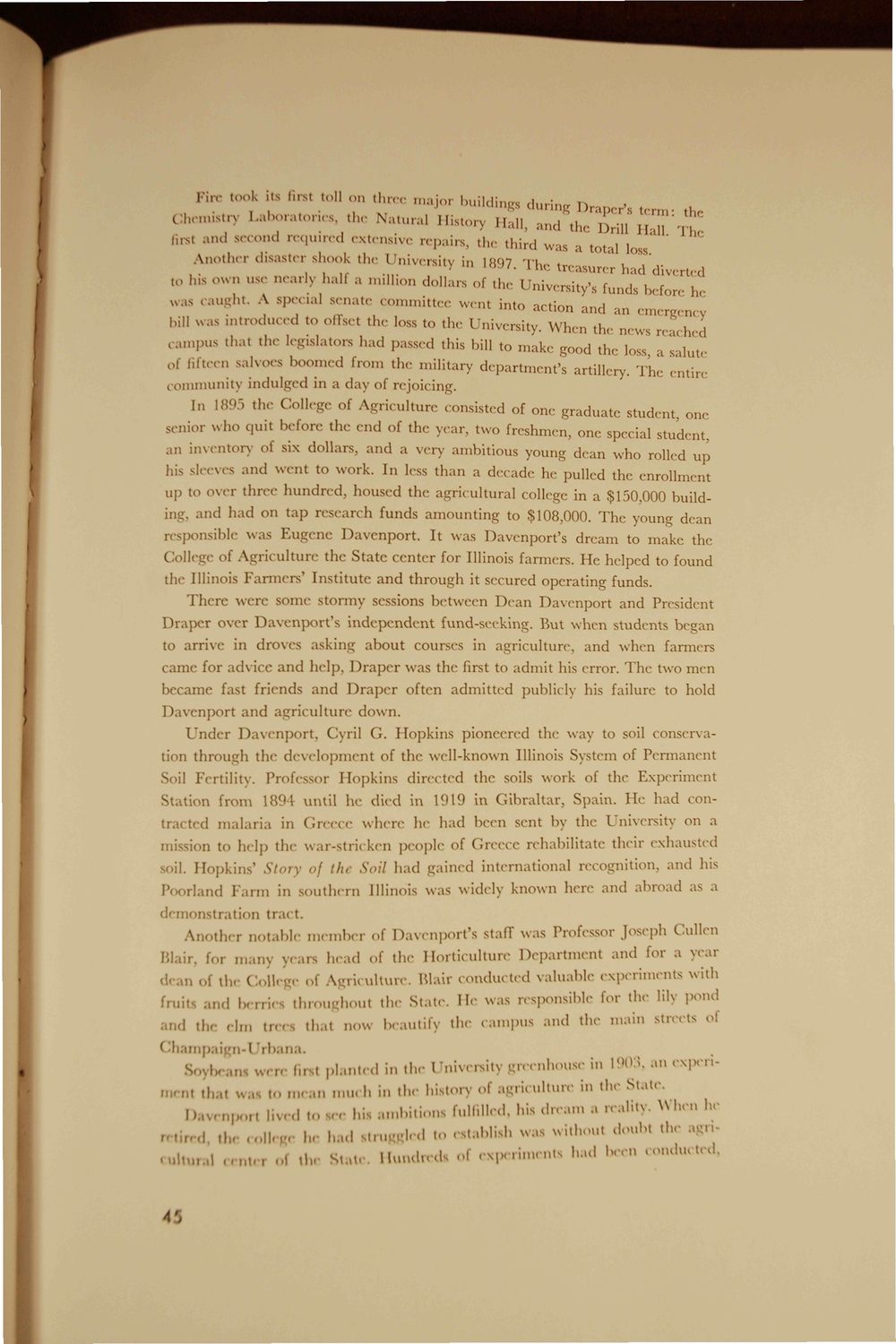| |
| |
Caption: Book - Illini Years
This is a reduced-resolution page image for fast online browsing.

EXTRACTED TEXT FROM PAGE:
Fire took its first toll on time major buildings during n and second required extensive repairs, the third was a total loss' ' Another disaster shook the University in 1897. The treasurer had diverted to his own use nearly hall a million dollars of the University's funds before he was caught. A special senate committee went into action and an emergency bill was introduced to offset the loss to the University. When the news reached c a m p u s that the legislators had passed this bill to make good the loss a salute Of fifteen salvoes boomed from the military department's artillery. The entire community indulged in a day of rejoicing. In 1895 the College of Agriculture consisted of one graduate student, one _ senior who quit before the end of the year, two freshmen, one special student, an inventory of six dollars, and a very ambitious young dean who rolled up his sleeves and went to work. In less than a decade he pulled the enrollment up to over three hundred, housed the agricultural college in a $150,000 buildin-, and had on tap research funds amounting to $108,000. The young dean responsible was Eugene Davenport. It was Davenport's dream to make the College of Agriculture the State center for Illinois farmers. He helped to found the Illinois Fanners' Institute and through it secured operating funds. There were some stormy sessions between Dean Davenport and President Diaper over Davenport's independent fund-seeking. But when students began to arrive in droves asking about courses in agriculture, and when farmers came for advice and help, Draper was the first to admit his error. The two men became fast friends and Draper often admitted publicly his failure to hold Davenport and agriculture down. Under Davenport, Cyril G. Hopkins pioneered the way to soil conservation through the development of the well-known Illinois Svstem of Permanent Soil Fertility. Professor Hopkins directed the soils work o( the Experiment Station from 1894 until he (lied in 1919 in Gibraltar, Spain. He had contracted malaria in Greece where he had been sent by the University on a mission to help the war-stricken people of Greece rehabilitate their exhausted oil. Hopkins' Story of the Soil had gained international recognition, and his Poorland Farm in southern Illinois was widely known here and abroad as a demonstration tract. Another notable member of Davenport's stair was Professor Joseph Cullen Blair, for many years head of the Horticulture Department and for a year dean of the ( ollcgc of Agra ulture. Blair conducted valuable experiments with fruit and berries throughout the State. He was responsible lor the lily pond nd the elm tr© that no* beautify the campus and the main streets ol ( first impaign-1 "ibana. Soybeans were fii I planted in the I rniversity greenhouse in 1903, an experiment that uas tO ........ mU( h in the history ,4 apiculture in the State. I)., nport lived to ee his ambitions fulfilled, his dream a reality. When he , , . ..,, {hi (iill, h( had BtruKglcd to establish was without doubt the n > cultural . . . . . . . ... . 1 , State, Hundreds of experiments had been conducted, Arj
| |